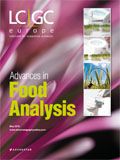Advances in Food Analysis
Special Issues
Introduction
Over the years, food consumers have moved their attention from hedonistic and basic survival pursuits to other fundamental nutritional aspects, such as safety, quality and potential health benefits.
Food labels must now report the identity and quantity of each specific constituent, such as fats, sugars, vitamins, water, etc.. However, the names and amounts of potentially dangerous substances, even though not printed on the food container, are of equal, if not of higher, interest. In this respect, increasingly tight government regulations have been introduced, following the occurrence of a series of well publicized food contamination scandals that were widely reported in the media.
Many will still remember the Italian methanol wine scandal in 1986, the Belgian dioxin crisis in 1999 and more recently in 2008, the scandal of mineraloil contamination in Ukrainian sunflower oil. In this last case, the food quantities concerned were enormous, circa 100000 tonnes.
It would be possible to go on listing other well-known distressful events, such as mad cow disease, a variety of aflotoxin contaminations, along with the infamous shadow of Sudan Red, but to do so would be outside the scope of the present introduction. What can be affirmed is that present day legislation is focused on every step of the food production chain (the farm-to-fork concept), and aims to guarantee food traceability, quality and very low contaminant levels.
The potential health benefits of a series of food constituents has also been increasingly emphasized in recent years, and has been a source of considerable commercial exploitation. Some of these positive effects have been fully demonstrated (such as, dietary fibre and omega-3 fatty acids), while others, mainly with hypothysed in-vivo antioxidant properties, have not. Typical examples are the presence of resveratrol isomers in red wine, lycopene in tomatoes and a variety of anthocyanins in blue-red coloured fruits. The isolation, structural elucidation, quantitative determination and definition of the metabolic activities of such constituents are fertile research fields.
The aforementioned radical changes in both the attitude of the general public and institutions have acted as a stimulant towards considerable evolution in the development of analytical methods — both in academia and industrial areas. Scientific instrumentation manufacturers have also devoted a great deal of financial resources to the food research area. Nowadays, analytical techniques enable a full compositional view of foods, with the area of chromatography-mass spectrometry possessing a fundamental role. It is in such a context that this LCGC Europe supplement fits in. Four short papers, focused on modern-day GC–MS, LC–MS, multidimensional LC–GC and sample preparation methodologies, are reported:
• The sample preparation manuscript briefly reviews the most recent sample preparation techniques applied to food analysis (based on solvent and sorbent extraction), accompanied by a discussion on the advantages and drawbacks of each approach.
• In the GC– and LC–MS contributions, brief descriptions and critical views of some of the most significant methods currently employed in the field of food analysis are reported. Considerable attention is devoted to the use of the mass spectrometer, in relation to its potential for separation and identification. With regards to LC–MS, technical requirements for the hyphenation of an LC system to an MS one, including the choice of the mobile phase, flow rate and type of ionization, are briefly discussed. The employment of the most powerful GC and LC techniques available today, namely comprehensive twodimensional GC and LC, are also described. Finally, future trends related to both separation-science approaches in the food field are reported.
• The multidimensional LC–GC paper provides descriptions of presentday interfacing systems, both for heartcutting and comprehensive 2D (LCGC) analyses. Specific food applications, currently of general high interest, are described.
Hopefully, the overviews in this special supplement from LCGC Europe, though brief, will provide the readers of this supplement a grasp of the availability, potential and applicability of modern analytical tools in the food analysis field.
Analytical Challenges in Measuring Migration from Food Contact Materials
November 2nd 2015Food contact materials contain low molecular weight additives and processing aids which can migrate into foods leading to trace levels of contamination. Food safety is ensured through regulations, comprising compositional controls and migration limits, which present a significant analytical challenge to the food industry to ensure compliance and demonstrate due diligence. Of the various analytical approaches, LC-MS/MS has proved to be an essential tool in monitoring migration of target compounds into foods, and more sophisticated approaches such as LC-high resolution MS (Orbitrap) are being increasingly used for untargeted analysis to monitor non-intentionally added substances. This podcast will provide an overview to this area, illustrated with various applications showing current approaches being employed.







